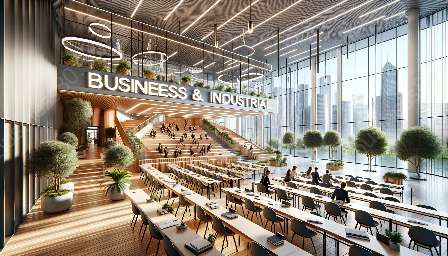When it comes to operations management and business education, the significance of facility location and layout cannot be overstated. The decisions made regarding the physical location and design of facilities can have a critical impact on an organization’s overall performance, efficiency, and competitiveness.
Understanding Facility Location
Facility location refers to the strategic process of determining the most suitable geographic location for a company's operations, such as manufacturing plants, distribution centers, and retail outlets. A well-chosen location can provide significant advantages, including proximity to suppliers and customers, access to skilled labor, and favorable economic conditions. Conversely, a poor location can result in logistical challenges, increased costs, and limited market reach.
Factors such as market demand, transportation infrastructure, labor availability, and regulatory considerations play a crucial role in the decision-making process for facility location. Additionally, the rise of e-commerce and global supply chains has introduced new complexities, making the evaluation of location alternatives even more intricate.
Optimizing Facility Layout
Once the location of a facility has been determined, the layout of the facility becomes a critical consideration. The layout refers to the physical arrangement of resources, equipment, and workspaces within a facility, with the primary goal of maximizing operational efficiency, minimizing waste, and enhancing productivity.
Effective facility layout design involves a comprehensive analysis of workflow, material handling, space utilization, and ergonomic considerations. By strategically organizing the placement of machinery, storage areas, and workstations, businesses can streamline processes, reduce unnecessary movement, and create optimal conditions for employee performance.
Strategies for Facility Location and Layout Decisions
Strategic decision-making related to facility location and layout involves a blend of quantitative analysis, qualitative assessments, and forward-thinking insights. It requires a multidisciplinary approach that incorporates operations management principles, business strategy, and market dynamics.
From an operations management perspective, tools and techniques such as geographic information systems (GIS), network optimization models, and location analysis software can provide valuable support in evaluating alternative locations based on factors such as transportation costs, market accessibility, and risk mitigation.
Moreover, the integration of lean management principles, just-in-time (JIT) methodologies, and process optimization strategies can drive the development of efficient facility layouts that minimize waste, enhance flow, and support continuous improvement.
Implications for Business Education
Understanding the intricacies of facility location and layout is fundamental for students pursuing business education, particularly those specializing in operations management or supply chain management. By delving into real-world case studies and experiential learning opportunities, students can gain practical insights into the complexities and trade-offs involved in making location and layout decisions.
Furthermore, the incorporation of simulation exercises, facility design projects, and collaborative problem-solving activities can enable students to develop the critical thinking skills necessary for navigating the multifaceted challenges of facility design and location selection. Emphasizing the connection between theoretical concepts and practical applications fosters a well-rounded understanding of how facility decisions impact operational performance and business success.
Conclusion
The impact of facility location and layout on operations management and business education cannot be overlooked. By recognizing the intricate interplay between location decisions, facility design, and operational efficiency, organizations can optimize their resource utilization, reduce costs, and gain a competitive edge. Through targeted education and strategic decision-making, businesses can harness the transformative potential of facility location and layout to drive sustainable growth and success in today's dynamic business landscape.

